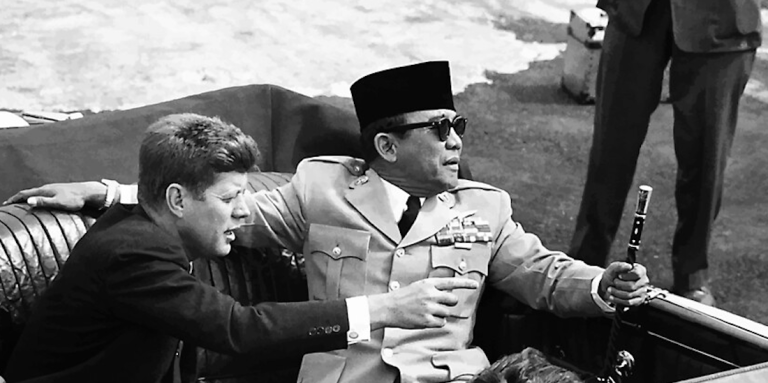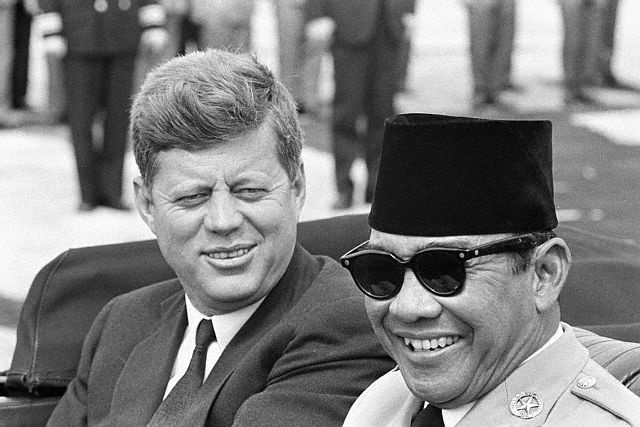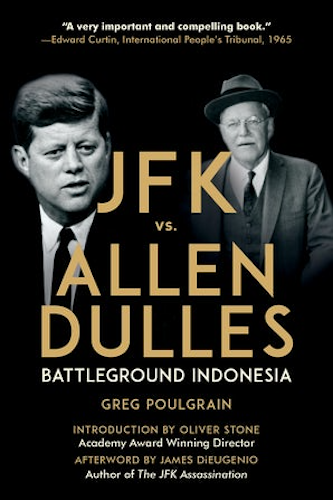
Excellent Book Exposes U.S. Involvement in President Suharto’s Rise and the Fall of President Sukarno
New York, N.Y. — Greg Poulgrain’s The USA, the CIA and Suharto’s Coup is a gripping investigation into one of the Cold War’s darkest episodes—the 1965 Indonesian coup that brought Suharto to power and left an estimated 500,000 dead.
Drawing on decades of research, Poulgrain argues that the coup was not just a local power struggle but the culmination of a covert CIA strategy to protect U.S. corporate interests in Southeast Asia.
The Battle for Indonesia: JFK vs. the CIA
At the heart of Poulgrain’s narrative is the ideological clash between President John F. Kennedy and Allen Dulles, the longtime CIA director.

Kennedy, who sought to win over Sukarno through development aid, was assassinated before he could implement his plan.
Dulles, a staunch defender of corporate interests, saw Indonesia’s military as the key to securing U.S. dominance.
Poulgrain reveals how Dulles’s “Indonesia strategy” began in the 1950s, aiming to weaken Sukarno’s left-leaning government and empower the military.
When Kennedy fired Dulles in 1961, the CIA veteran didn’t retire—he doubled down.
Behind the scenes, Dulles’s network worked to ensure that Kennedy’s reformist vision died with him.
Suharto’s Hidden Role in the Coup
The book’s most explosive claim is that Suharto, often portrayed as the savior who crushed a communist plot, was actually complicit in the September 30th Movement. Drawing on interviews with imprisoned coup participants like Colonel Abdul Latief, Poulgrain argues that Suharto knew about the plot in advance—and may have orchestrated it to eliminate rivals.
“Even though the evidence has emerged half a century after the event, it is evidence [Suharto] was on the inside of the movement,” Poulgrain writes. Declassified documents show that Suharto ordered attacks on communist targets before the coup was publicly announced—suggesting foreknowledge.
The Gold, the Oil, and the Shadows of Empire

Poulgrain’s research stretches beyond 1965, uncovering how U.S. corporate interests shaped Indonesia’s fate.
Chapter 2 details the discovery of the world’s richest gold deposit in Papua by Dutch geologists—a secret kept for decades to benefit what is now Freeport-McMoRan, a U.S. mining giant.
Chapter 3 traces Dulles’s ties to Standard Oil, revealing how he worked to safeguard its Indonesian operations. Chapter 4 argues that the CIA instigated a 1958 rebellion in Sulawesi to justify centralizing military power—a move that paved the way for Suharto’s takeover.
A Legacy of Violence and Secrecy
The book’s final chapters explore the global repercussions of Dulles’s tactics.
Chapter 5 links him to the assassinations of Patrice Lumumba and Dag Hammarskjöld, who had planned major U.N. development projects.
Chapter 6 examines Cold War intrigue in Papua, including the mysterious disappearance of Michael Rockefeller, spun into a racist myth of “cannibals” to justify continued foreign control.
Oliver Stone, who penned the book’s introduction, praises Poulgrain for exposing “just how pre-planned and well-executed the ‘year of living dangerously’ was.” For readers seeking to understand how covert operations shape history, this book is essential.
How the CIA Secretly Shaped Indonesia’s Bloody 1965 Coup (July 10, 2025)
Summary
In this revealing work, historian Greg Poulgrain uncovers the CIA’s hidden hand in Indonesia’s 1965 coup, arguing that Suharto’s rise was no accident but a carefully orchestrated move to secure U.S. corporate interests. Through declassified documents and eyewitness accounts, Poulgrain shows how Cold War power struggles left a lasting mark on Southeast Asia.